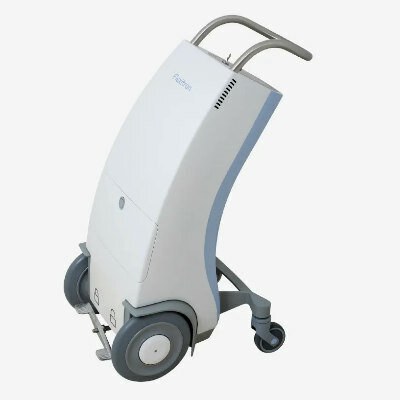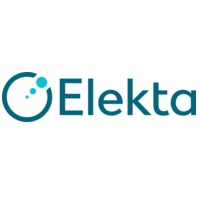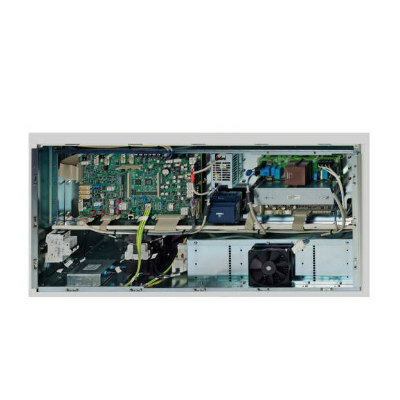3D Scanning Enables Earlier Melanoma Detection 
|
By MedImaging International staff writers Posted on 30 Sep 2021 |

Image: A 3-D fully body imaging scanner can map the entire body in one second (Photo courtesy of ACEMID)
The Australian Centre of Excellence in Melanoma Imaging and Diagnosis (ACEMID; Brisbane, Australia), a collaboration between the University of Queensland (UQ; Brisbane, Australia), the University of Sydney (US; Australia), and Monash University (Melbourne, Australia) is the basis for a new national network of interconnected 3D full body scanning and mapping systems that can help track moles and skin spots over time.
The telemedicine network will allow dermatologists and medical professionals to detect skin cancers remotely, across Australia. Medical researchers will be able to immediately access a database of up to 100,000 patient images taken by the 3D full body imaging systems located in the Queensland, New South Wales (NSW), and Victoria. Using algorithms created by artificial intelligence (AI), the 3D imaging systems can analyze the images and produce a full body skin spot map, which can be used to monitor patients over time.
“Australia has the highest rates of melanoma in the world, with an average 28,000 Australians diagnosed with the disease every year,” said UQ dermatologist Professor H. Peter Soyer, MD. “This technology is revolutionizing early melanoma detection using 3D state-of-the-art body imaging systems that take an image in milliseconds, making it a game-changer for melanoma detection.”
“Australia has the deadliest form of melanoma, for which there is currently no standardized diagnosis. Clinical trials and cohort studies are crucial sources of evidence for the improvement of health and healthcare,” said Greg Hunt, Australian Minister for Health and Aged Care. “Cutting-edge, total-body 3D imaging machines across metropolitan and regional Queensland, NSW, and Victoria, will help to discover more effective diagnosis options for thousands of Australians who are tested for skin cancer each year.”
Melanoma is a malignant tumor of melanocytes, the cells that produce the dark pigment, melanin, which is responsible for the color of skin. They predominantly occur in skin, but are also found in other parts of the body, including the bowel and the eye. Melanoma is less common than other skin cancers. However, it is much more dangerous and causes the majority (75%) of deaths related to skin cancer. Treatment includes surgical removal of the tumor, adjuvant treatment, chemo- and immunotherapy, or radiation therapy.
Related Links:
Australian Centre of Excellence in Melanoma Imaging and Diagnosis
University of Queensland
University of Sydney
Monash University
The telemedicine network will allow dermatologists and medical professionals to detect skin cancers remotely, across Australia. Medical researchers will be able to immediately access a database of up to 100,000 patient images taken by the 3D full body imaging systems located in the Queensland, New South Wales (NSW), and Victoria. Using algorithms created by artificial intelligence (AI), the 3D imaging systems can analyze the images and produce a full body skin spot map, which can be used to monitor patients over time.
“Australia has the highest rates of melanoma in the world, with an average 28,000 Australians diagnosed with the disease every year,” said UQ dermatologist Professor H. Peter Soyer, MD. “This technology is revolutionizing early melanoma detection using 3D state-of-the-art body imaging systems that take an image in milliseconds, making it a game-changer for melanoma detection.”
“Australia has the deadliest form of melanoma, for which there is currently no standardized diagnosis. Clinical trials and cohort studies are crucial sources of evidence for the improvement of health and healthcare,” said Greg Hunt, Australian Minister for Health and Aged Care. “Cutting-edge, total-body 3D imaging machines across metropolitan and regional Queensland, NSW, and Victoria, will help to discover more effective diagnosis options for thousands of Australians who are tested for skin cancer each year.”
Melanoma is a malignant tumor of melanocytes, the cells that produce the dark pigment, melanin, which is responsible for the color of skin. They predominantly occur in skin, but are also found in other parts of the body, including the bowel and the eye. Melanoma is less common than other skin cancers. However, it is much more dangerous and causes the majority (75%) of deaths related to skin cancer. Treatment includes surgical removal of the tumor, adjuvant treatment, chemo- and immunotherapy, or radiation therapy.
Related Links:
Australian Centre of Excellence in Melanoma Imaging and Diagnosis
University of Queensland
University of Sydney
Monash University
Latest General/Advanced Imaging News
- New AI Method Captures Uncertainty in Medical Images
- CT Coronary Angiography Reduces Need for Invasive Tests to Diagnose Coronary Artery Disease
- Novel Blood Test Could Reduce Need for PET Imaging of Patients with Alzheimer’s
- CT-Based Deep Learning Algorithm Accurately Differentiates Benign From Malignant Vertebral Fractures
- Minimally Invasive Procedure Could Help Patients Avoid Thyroid Surgery
- Self-Driving Mobile C-Arm Reduces Imaging Time during Surgery
- AR Application Turns Medical Scans Into Holograms for Assistance in Surgical Planning
- Imaging Technology Provides Ground-Breaking New Approach for Diagnosing and Treating Bowel Cancer
- CT Coronary Calcium Scoring Predicts Heart Attacks and Strokes
- AI Model Detects 90% of Lymphatic Cancer Cases from PET and CT Images
- Breakthrough Technology Revolutionizes Breast Imaging
- State-Of-The-Art System Enhances Accuracy of Image-Guided Diagnostic and Interventional Procedures
- Catheter-Based Device with New Cardiovascular Imaging Approach Offers Unprecedented View of Dangerous Plaques
- AI Model Draws Maps to Accurately Identify Tumors and Diseases in Medical Images
- AI-Enabled CT System Provides More Accurate and Reliable Imaging Results
- Routine Chest CT Exams Can Identify Patients at Risk for Cardiovascular Disease
Channels
Radiography
view channel
Novel Breast Imaging System Proves As Effective As Mammography
Breast cancer remains the most frequently diagnosed cancer among women. It is projected that one in eight women will be diagnosed with breast cancer during her lifetime, and one in 42 women who turn 50... Read more
AI Assistance Improves Breast-Cancer Screening by Reducing False Positives
Radiologists typically detect one case of cancer for every 200 mammograms reviewed. However, these evaluations often result in false positives, leading to unnecessary patient recalls for additional testing,... Read moreMRI
view channel
PET/MRI Improves Diagnostic Accuracy for Prostate Cancer Patients
The Prostate Imaging Reporting and Data System (PI-RADS) is a five-point scale to assess potential prostate cancer in MR images. PI-RADS category 3 which offers an unclear suggestion of clinically significant... Read more
Next Generation MR-Guided Focused Ultrasound Ushers In Future of Incisionless Neurosurgery
Essential tremor, often called familial, idiopathic, or benign tremor, leads to uncontrollable shaking that significantly affects a person’s life. When traditional medications do not alleviate symptoms,... Read more
Two-Part MRI Scan Detects Prostate Cancer More Quickly without Compromising Diagnostic Quality
Prostate cancer ranks as the most prevalent cancer among men. Over the last decade, the introduction of MRI scans has significantly transformed the diagnosis process, marking the most substantial advancement... Read moreUltrasound
view channel
Deep Learning Advances Super-Resolution Ultrasound Imaging
Ultrasound localization microscopy (ULM) is an advanced imaging technique that offers high-resolution visualization of microvascular structures. It employs microbubbles, FDA-approved contrast agents, injected... Read more
Novel Ultrasound-Launched Targeted Nanoparticle Eliminates Biofilm and Bacterial Infection
Biofilms, formed by bacteria aggregating into dense communities for protection against harsh environmental conditions, are a significant contributor to various infectious diseases. Biofilms frequently... Read moreNuclear Medicine
view channel
New SPECT/CT Technique Could Change Imaging Practices and Increase Patient Access
The development of lead-212 (212Pb)-PSMA–based targeted alpha therapy (TAT) is garnering significant interest in treating patients with metastatic castration-resistant prostate cancer. The imaging of 212Pb,... Read moreNew Radiotheranostic System Detects and Treats Ovarian Cancer Noninvasively
Ovarian cancer is the most lethal gynecological cancer, with less than a 30% five-year survival rate for those diagnosed in late stages. Despite surgery and platinum-based chemotherapy being the standard... Read more
AI System Automatically and Reliably Detects Cardiac Amyloidosis Using Scintigraphy Imaging
Cardiac amyloidosis, a condition characterized by the buildup of abnormal protein deposits (amyloids) in the heart muscle, severely affects heart function and can lead to heart failure or death without... Read moreImaging IT
view channel
New Google Cloud Medical Imaging Suite Makes Imaging Healthcare Data More Accessible
Medical imaging is a critical tool used to diagnose patients, and there are billions of medical images scanned globally each year. Imaging data accounts for about 90% of all healthcare data1 and, until... Read more
Global AI in Medical Diagnostics Market to Be Driven by Demand for Image Recognition in Radiology
The global artificial intelligence (AI) in medical diagnostics market is expanding with early disease detection being one of its key applications and image recognition becoming a compelling consumer proposition... Read moreIndustry News
view channel
Bayer and Google Partner on New AI Product for Radiologists
Medical imaging data comprises around 90% of all healthcare data, and it is a highly complex and rich clinical data modality and serves as a vital tool for diagnosing patients. Each year, billions of medical... Read more





















